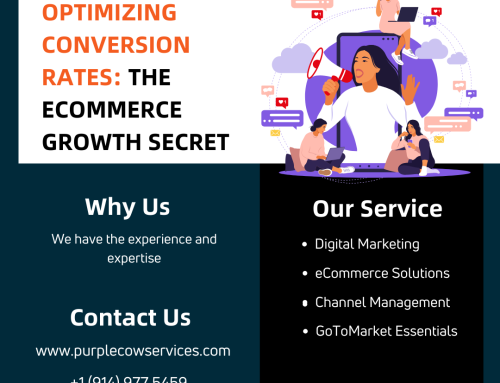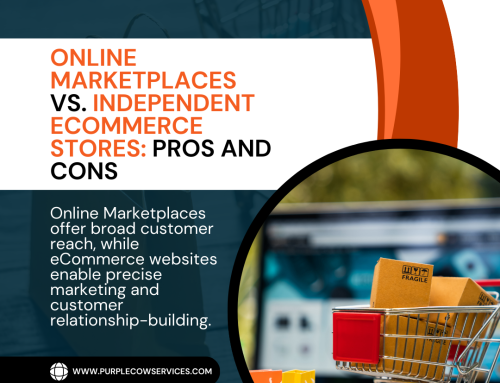In today's digital era, mobile commerce has become an integral part of the retail landscape. With the proliferation of smartphones and tablets, consumers now expect a seamless and convenient shopping experience on their mobile devices.
Share This Story, Choose Your Platform!
To succeed in the mobile commerce game, businesses must prioritize strategies that ensure a flawless user experience. In this blog, we will explore winning strategies for optimizing mobile commerce and capturing the attention of mobile shoppers.
Understanding the Importance of Mobile Commerce
Mobile commerce, also known as m-commerce, refers to the buying and selling of products and services through mobile devices Its convenience and accessibility have made it incredibly popular among users. According to statistics, mobile devices account for a significant portion of online sales, and this trend is expected to continue growing. By understanding the importance of mobile commerce, businesses can capitalize on this lucrative market and stay ahead of the competition.
Embrace Responsive Design for Seamless Adaptation
One of the key strategies for a successful mobile commerce experience is embracing responsive design. Responsive design ensures that your website or online store adapts seamlessly to different screen sizes and devices. This means that regardless of whether a user is browsing on a smartphone, tablet, or desktop, your website will display optimally and provide an enjoyable shopping experience. Responsive design eliminates the need for separate mobile sites and streamlines your online presence.
Streamline Navigation and User Interface
A smooth and intuitive navigation system is crucial for mobile commerce success. Mobile users have limited screen space, so it’s essential to simplify navigation and ensure easy access to important features and product categories. Implement clear menus, visible search bars, and prominent call-to-action buttons to guide users seamlessly through their shopping journey. Additionally, optimize your user interface for touch interactions, making it easy for customers to browse, select, and purchase products with a few taps.
Optimize Load Times for Instant Gratification
Mobile users expect instant gratification, and slow load times can be a significant deterrent. Optimizing your mobile commerce site for fast loading is paramount. Compress images, minify code, and leverage caching techniques to reduce page load times. Consider adopting progressive loading or lazy loading techniques to prioritize content that appears above the fold. By delivering a swift and responsive mobile experience, you can keep users engaged and increase conversion rates.
Implement Secure and Seamless Payment Solutions
A crucial aspect of mobile commerce is providing secure and seamless payment options. Implement trusted and widely accepted mobile payment solutions, such as Apple Pay, Google Pay, or mobile wallets, to simplify the checkout process. Ensure that your payment gateway is encrypted and meets the latest security standards, instilling trust and confidence in your customers. Offering a variety of payment methods and a frictionless checkout experience can significantly improve mobile conversion rates.
Personalize the Mobile Shopping Experience
Personalization is key to engaging mobile shoppers and fostering loyalty. Leverage customer data and insights to deliver personalized product recommendations, offers, and promotions based on each user’s preferences and purchase history. Implement user-friendly account and profile management features, allowing customers to save their preferences, shipping addresses, and payment information for a hassle-free shopping experience. By tailoring the mobile shopping experience to individual users, you can enhance customer satisfaction and drive repeat purchases.
Leverage Push Notifications for Engagement
Push notifications are a powerful tool to drive engagement and increase mobile commerce conversions. Utilize push notifications to deliver personalized offers, flash sales, and order updates directly to your customers’ mobile devices. However, it’s crucial to strike a balance between useful notifications and avoiding being perceived as intrusive. Allow users to opt-in or customize their notification preferences to ensure relevancy and enhance the overall user experience.
Optimize for Local Search and Geolocation
Mobile commerce often involves location-based searches, with users looking for products or services nearby. Optimizing your mobile commerce strategy for local search and geolocation can help you capture these potential customers. Incorporate location-specific keywords in your content, meta tags, and product descriptions to improve your store’s visibility in local search results. Additionally, claim and optimize your business listings on platforms like Google My Business, ensuring that your store’s address, contact information, and operating hours are accurate. By appearing prominently in local search results, you can drive more foot traffic and increase mobile conversions.
Provide Seamless Cross-Channel Experiences
Mobile commerce is just one piece of the overall customer journey. To create a seamless user experience, it’s essential to provide consistent experiences across multiple channels. Whether a customer starts their shopping journey on their mobile device and later switches to a desktop or visits a physical store, the experience should be seamless and connected. Implement technologies like omnichannel retailing, allowing customers to seamlessly transition between different touchpoints without losing their progress. This unified experience enhances customer satisfaction and encourages repeat purchases.
Leverage Social Commerce for Mobile Engagement
Social media platforms have become powerful tools for mobile commerce engagement. Leverage social commerce features to showcase your products, enable easy purchasing directly on social media platforms, and encourage user-generated content and reviews. Incorporate social sharing buttons on your mobile commerce site, allowing users to share their favorite products or purchases with their social network. By integrating social commerce into your mobile strategy, you can tap into the vast reach and influence of social media to drive mobile conversions.
Continuously Test and Optimize
Mobile commerce is a dynamic and ever-evolving field. To stay ahead of the game, it’s crucial to continuously test and optimize your mobile commerce strategy. Conduct A/B testing to compare different layouts, designs, and call-to-action placements to determine the most effective approach. Analyze user behavior through analytics tools, identifying areas for improvement and refining your mobile commerce experience based on user feedback and data. By embracing a data-driven approach, you can iteratively enhance your mobile commerce strategy and provide an exceptional user experience.
Conclusion
Winning the mobile commerce game requires a comprehensive and user-centric approach. By embracing responsive design, streamlining navigation, optimizing load times, and providing secure payment options, you can create a seamless mobile commerce experience. Personalization, push notifications, and local optimization further enhance engagement and conversions. Additionally, integrating cross-channel experiences, leveraging social commerce, and continuously testing and optimizing your strategy will ensure long-term success. By implementing these winning strategies, your business can thrive in the mobile commerce landscape and deliver exceptional experiences to your mobile shoppers.
Unlock the potential of mobile commerce with Purple Cow. Our winning strategies ensure a seamless user experience, from responsive design to optimized load times. Personalize the mobile shopping journey, leverage push notifications, and tap into local search for maximum engagement. With cross-channel integration and social commerce, you’ll capture the attention of mobile shoppers. Stay ahead of the game and drive conversions with Purple Cow’s 360° eCommerce Solutions.
Share This Story, Choose Your Platform!
In This Blog:

















